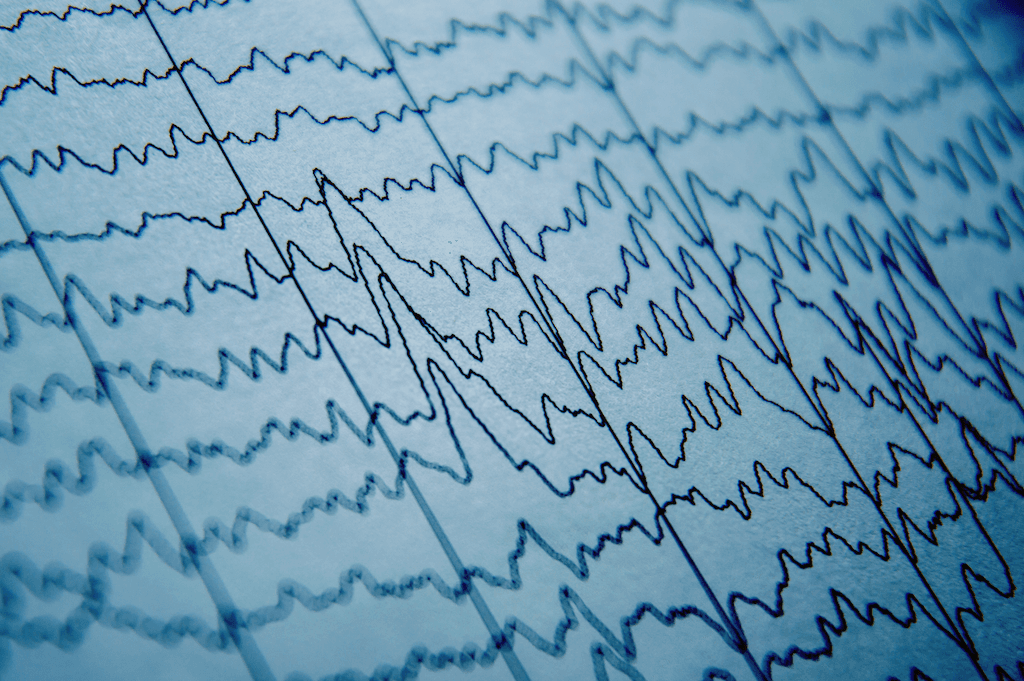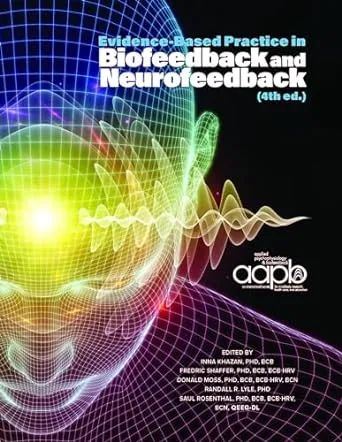The world of neurofeedback training: A comprehensive guide
Learn all about neurofeedback training, a crucial tool for optimizing brain function. Discover how EEG biofeedback, including for ADHD, can enhance your mental performance.
Apr 8, 2024
Neurofeedback, a cutting-edge technology that helps individuals optimize their brain function, has gained significant popularity in recent years. With numerous methods and approaches available, it can be challenging to understand the differences between them and determine which one might be best suited for your needs. In this blog post, we'll explore the various types of neurofeedback, the importance of QEEG and ERP assessments, and highlight some premium training options.
A brief history of neurofeedback
Neurofeedback, also known as EEG biofeedback, has a rich history dating back to the 1950s and 1960s. The field emerged from the pioneering work of researchers like Dr. Joe Kamiya, who discovered that individuals could learn to control their brain wave patterns through operant conditioning.
In the 1970s, Dr. Barry Sterman's groundbreaking research on cats demonstrated the potential of neurofeedback for treating epilepsy, paving the way for its application in human clinical settings. Throughout the 1980s and 1990s, neurofeedback gained recognition as a non-invasive treatment for a wide range of conditions, including ADHD, anxiety, and depression.
Today, with advancements in technology and a growing body of research supporting its efficacy, neurofeedback continues to evolve and expand, offering individuals a powerful tool for optimizing brain function and enhancing overall well-being.
Most recently, neuromodulation has emerged as a powerful supplement or alternative to neurofeedback, providing lasting results in far less time than classic neurofeedback.
The importance of QEEG and ERP assessment
Before beginning any neurofeedback training, it is crucial to undergo a comprehensive assessment of brain function. QEEG (Quantitative Electroencephalography) and ERP (Event-Related Potential) assessments provide valuable insights into an individual's unique brain patterns, strengths, and areas for improvement.
A QEEG assessment typically involves recording brain activity under various conditions, such as eyes closed and eyes open. In a resting state EEG, the absence of persistent patterns is expected, so any features that do persist are considered for their significance. The signature of such a feature, including the affected brain regions and dysregulated frequencies, provides insight into potential impacts on cognitive function, emotional regulation, and autonomic function.
ERP assessments, on the other hand, measure the brain's response to specific stimuli, such as sounds or visual cues. This information can provide valuable insights into an individual's cognitive processing speed, attention, and decision-making abilities. By incorporating ERP data into the training protocol, practitioners can help individuals optimize these critical cognitive skills.

Single channel vs. electrode cap
When it comes to neurofeedback, the number of channels used for assessment and training can make a significant difference. Single channel neurofeedback typically involves placing one or two electrodes on the scalp to measure and train brain activity in a specific region. While this approach can be effective, it may not provide a comprehensive picture of the brain's overall functioning.
In contrast, 19-channel QEEG (Quantitative Electroencephalography) and neurofeedback utilize a full cap with 19 electrodes to assess and train brain activity across multiple regions simultaneously. This approach allows for a more detailed analysis of brain function and connectivity, enabling practitioners to identify specific patterns and imbalances that may be contributing to an individual's symptoms or challenges. By targeting these areas with precision, 19-channel neurofeedback can offer a more comprehensive and effective training experience.
At Bay Area Peak Performance, we prefer to use 37-channel QEEG in our assessments. By using twice as many electrodes as a typical 19-channel cap, we can gain precision in developing your personalized training plan. We believe that in the future, 64-channel EEG will be the ideal configuration with more electrodes not adding significantly more value for our purposes.
Brainwave amplitude training
Amplitude training is a traditional neurofeedback method that focuses on increasing or decreasing the amplitude (power) of specific brain wave frequencies. This approach aims to help individuals achieve a more balanced and optimized brain state by encouraging the brain to produce more of the desired frequencies and less of the undesired ones. Amplitude training can be useful for addressing a wide range of cognitive and emotional challenges, such as attention deficits, anxiety, and mood disorders.

Z-Score neurofeedback therapy
Z-Score training is a more advanced form of neurofeedback that utilizes a normative database to compare an individual's brain activity to that of a healthy population. By targeting specific brain regions and frequencies that deviate from the norm, Z-Score training aims to guide the brain towards a more optimal state. This approach is highly personalized and can be effective for treating various neurological and psychological conditions, as well as enhancing overall cognitive performance.
A common misperception is that Z-score training trains all brains to be "normal." The intention of Z-score neurofeedback is really to simply increase stability of brain activity.
Othmer method neurofeedback treatment
The Othmer Method, developed by neurofeedback pioneers Siegfried and Susan Othmer, is a unique approach that combines multiple neurofeedback techniques, including amplitude training and frequency training. This method emphasizes the importance of tailoring the training protocol to each individual's specific needs and goals, and often incorporates peripheral biofeedback to promote overall relaxation and self-regulation.
Othmer infra-low neurofeedback training is unique in that there is not a specific goal to the protocol. Rather than train the brain in a specific direction, the feedback reflects slow cortical potential shifts, and supports the brain's inherent ability to self-regulate.
NeurOptimal one-size-fits-all neurofeedback training
NeurOptimal is a non-linear dynamical neurofeedback system that uses a different approach compared to traditional methods. Instead of targeting specific brain wave frequencies or regions, NeurOptimal focuses on optimizing the overall functioning of the brain and nervous system by providing real-time feedback on its moment-to-moment activity. This approach is designed to help the brain become more flexible, resilient, and efficient in processing information and adapting to challenges.
NeurOptimal uses only two electrodes on the sensory motor strip, getting a generalized impression of brain activity. This approach can be very effective at relaxation and general wellness, but is not well suited to more specific or targeted problems.

Neuromodulation offers fast time to results
Neuromodulation, although less common than neurofeedback, is gaining attention for its faster and more efficient outcomes. We recommend this over neurofeedback in nearly every case. Here's why:
Rapid Effects: Neuromodulation often produces noticeable improvements in cognitive function and mood after just a few sessions. This quick response instills confidence in the process.
Fewer Sessions: Compared to neurofeedback, neuromodulation typically requires fewer sessions, often just around 10-20, to achieve lasting change. Neurofeedback may take twice as long or more.
Enhanced Motivation: The rapid progress seen with neuromodulation keeps clients motivated and engaged in the treatment.
While both approaches have their strengths, neuromodulation's speed and efficiency make it an attractive choice for busy professionals seeking quicker results.
Neurofeedback: High tech plant medicine without the plants
All neurofeedback can produce deep personal growth, but some providers have leveraged the technology to facilitate an experience akin to a plant medicine retreat. The BioCybernaut Institute and 40 Years of Zen offer unique opportunities for deep personal growth and transformation.

40 Years of Zen is a comprehensive training program that combines advanced neurofeedback technology with mindfulness practices, nutrition, and other holistic approaches. Participants engage in a 5-day long retreat, working one-on-one with experienced trainers to optimize their brain function and achieve profound insights and breakthroughs.
Similarly, BioCybernaut offers a seven-day intensive training program that utilizes cutting-edge neurofeedback technology, along with a supportive group environment and expert guidance. This program aims to help individuals unlock their full potential, overcome limiting beliefs, and achieve greater emotional mastery and spiritual awareness.
Both 40 Years of Zen and BioCybernaut provide a transformative experience that goes beyond traditional neurofeedback, incorporating elements of personal development, mindfulness, and self-discovery.
These programs specialize in using synchrony training to identify and release conditioned thinking patterns. For example, Alpha synchrony neurofeedback trains the subject to let their cortex idle, calming their conscious mind and potentially allowing unconscious content to surface. Pathological, conditioned thinking patterns can inhibit this ability. Coaches work with the subject to identify what past experience may be holding them back and limiting their potential, coach them through a forgiveness process to let it go, and the neurofeedback confirms when it has been released and the brain can synchronize.
Transcranial Magnetic Stimulation
In addition to neurofeedback, Transcranial Magnetic Stimulation (TMS) is another intervention worth mentioning. TMS is a non-invasive medical procedure that uses magnetic fields to stimulate specific areas of the brain. This treatment is FDA-approved for treating major depressive disorder and has shown promise in addressing other neurological and psychiatric conditions.
While TMS is not a form of neurofeedback, it is a powerful tool for modulating brain activity and promoting neuroplasticity. In some cases, TMS may be used in conjunction with neurofeedback to provide a comprehensive approach to brain optimization.
Conclusion
The world of neurofeedback offers a wide range of methods and approaches for optimizing brain function and addressing various cognitive, emotional, and behavioral challenges. From traditional amplitude training to more advanced techniques like Z-Score training and NeurOptimal, there are options available to suit different needs and preferences.
When considering neurofeedback, it is essential to prioritize a comprehensive assessment of brain function through QEEG and ERP testing. These assessments provide valuable insights that inform the development of targeted and effective training protocols.
Neuromodulation offers a compelling alternative to neurofeedback with more rapid time to results.
For those seeking a retreat-like transformative experience, options like 40 Years of Zen and BioCybernaut offer unique opportunities for deep personal growth and self-discovery.
Ultimately, the key to success with neurofeedback lies in working with experienced practitioners who can guide you through the process, helping you select the most appropriate method and approach for your individual needs and goals. By optimizing your brain function through neurofeedback, you can unlock your full potential and achieve greater well-being, resilience, and performance in all areas of life.
Frequently Asked Questions
What is neurofeedback?
Neurofeedback, also known as biofeedback, is a type of brain training that uses eeg signals to provide real-time feedback on brain activity. It is often used in the treatment of conditions such as adhd and anxiety disorders.
How does neurofeedback training work?
Neurofeedback training involves placing electrodes on the scalp to monitor brainwave patterns. Through a process of operant conditioning, individuals learn to regulate their brain function by receiving feedback on their brain waves.
Who can benefit from neurofeedback therapy?
Individuals with conditions such as autism spectrum disorder, brain injury, or slow cortical activity may benefit from neurofeedback therapy to improve their nervous system functioning.
What are the benefits of neurofeedback?
Neurofeedback has been shown to help with improving cognitive function, reducing anxiety disorders, and even enhancing video game performance through training the brain waves using real-time feedback.
Is neurofeedback treatment supported by research?
Neurofeedback research has shown the effectiveness of neurofeedback in treating a variety of health conditions. The International Society for Neurofeedback and Research and the Biofeedback Certification International Alliance are just a few organizations that support the use of neurofeedback in clinical applications. While some critics argue that the benefits of neurofeedback may be due to a placebo effect, “Evidence-Based Practice in Biofeedback and Neurofeedback" makes a compelling case that neurofeedback is very specific and has a large effect size for depression, anxiety, ADHD and other conditions.

Evidence-Based Practice in Biofeedback and Neurofeedback (4th edition) © 2023 Applied Psychophysiology and Biofeedback
How does EEG biofeedback differ from traditional biofeedback?
EEG biofeedback focuses specifically on the eeg signals and neurofeedback system, whereas traditional biofeedback and neurofeedback may incorporate a wider range of biofeedback protocols for different purposes.
© 2023 - 2024 James Croall - All Rights Reserved.
Learn how to break free!
Complete our quick 2-minute assessment to learn more about your key obstacles to peak performance, and explore both self-help solutions and how we can help you become your best self.

